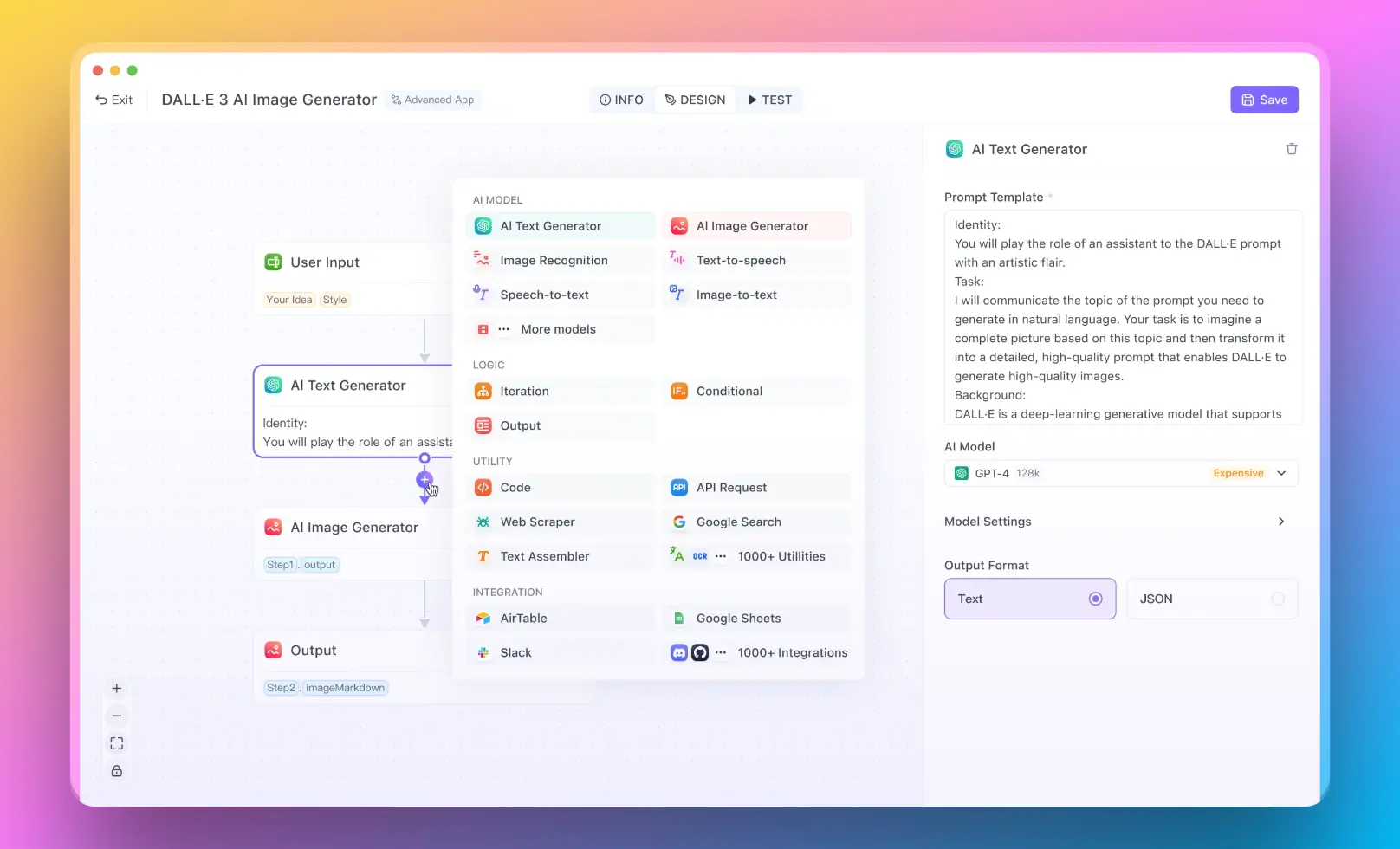
Mistral AI has once again pushed the boundaries of innovation with the release of Codestral Mamba.

This cutting-edge language model, unveiled on July 16, 2024, represents a significant leap forward in code generation capabilities, leveraging the novel Mamba architecture to deliver unprecedented performance and efficiency.
You can easily create AI workflows with Anakin AI without any coding knowledge. Connect to LLM APIs such as: GPT-4, Claude 3.5 Sonnet, Uncensored Dolphin-Mixtral, Stable Diffusion, DALLE, Web Scraping.... into One Workflow!
Forget about complicated coding, automate your madane work with Anakin AI!
For a limited time, you can also use Google Gemini 1.5 and Stable Diffusion for Free!

The Mamba Architecture: A Paradigm Shift in Language Models
At the heart of Codestral Mamba lies the Mamba architecture, a revolutionary approach to language modeling that departs from the traditional Transformer-based structures. Developed by researchers in late 2023, Mamba introduces a simplified attention mechanism that promises to overcome some of the limitations inherent in Transformer models.
Key Advantages of Mamba
Linear Time Inference: Unlike Transformer models, which typically have quadratic time complexity with respect to sequence length, Mamba offers linear time inference. This characteristic allows for significantly faster processing, especially for longer input sequences.
Infinite Sequence Modeling: Theoretically, Mamba models can handle sequences of infinite length. This capability is particularly valuable for tasks that involve processing extensive code bases or lengthy documents.
Efficient Long-Context Handling: Codestral Mamba has demonstrated the ability to manage in-context retrieval for up to 256,000 tokens, far surpassing the context windows of many existing models.
Why Mistral Chose Mamba
Mistral AI's decision to adopt the Mamba architecture for Codestral Mamba was driven by several factors:
Code-Specific Optimization: The linear time inference and long-context capabilities of Mamba align perfectly with the demands of code generation tasks, where quick responses and the ability to process large codebases are crucial.
Improved Efficiency: The streamlined attention mechanism in Mamba potentially allows for faster training and inference times compared to traditional Transformer models of similar size.
Innovation in Architecture Research: As part of Mistral AI's commitment to advancing the field of AI, Codestral Mamba serves as a platform for exploring new architectures beyond the dominant Transformer paradigm.
Technical Specifications and Performance
Codestral Mamba is a 7B parameter model, striking a balance between computational efficiency and model capacity. Some key technical details include:
- Parameter Count: 7,285,403,648
- License: Apache 2.0
- Maximum Context Length: Tested up to 256,000 tokens
- Architecture: Mamba2
Benchmark Evaluations
Mistral AI has conducted extensive benchmarking to assess Codestral Mamba's performance against other state-of-the-art code generation models. The results have been impressive:
HumanEval: Codestral Mamba outperformed rival open-source models such as CodeLlama 7B and CodeGemma-1.17B in this benchmark, which evaluates the model's ability to generate functionally correct code.
Code Completion Tasks: The model demonstrated superior performance in code completion scenarios, leveraging its ability to process long contexts efficiently.
Response Time: Thanks to the Mamba architecture, Codestral Mamba exhibited faster response times compared to Transformer-based models, especially for longer input sequences.
Context Window Utilization: The model effectively utilized its extended context window, showing consistent performance even with inputs approaching the 256,000 token limit.
Deploying Codestral Mamba Locally
For developers and researchers interested in leveraging Codestral Mamba's capabilities in their local environments, Mistral AI has provided several deployment options:
Using mistral-inference SDK
The recommended method for deploying Codestral Mamba is through the mistral-inference SDK. This approach ensures optimal performance and compatibility with the model's architecture.
- Install the required packages:
pip install mistral_inference>=1 mamba-ssm causal-conv1d
- Download the model weights:
from huggingface_hub import snapshot_download
from pathlib import Path
mistral_models_path = Path.home().joinpath('mistral_models', 'mamba-codestral-7B-v0.1')
mistral_models_path.mkdir(parents=True, exist_ok=True)
snapshot_download(
repo_id="mistralai/mamba-codestral-7B-v0.1",
local_dir=mistral_models_path,
token="your_huggingface_token"
)
- Load and use the model:
from mistral_inference import MambaModel
model = MambaModel.from_pretrained(mistral_models_path)
output = model.generate("def fibonacci(n):")
print(output)
Alternative Deployment Options
TensorRT-LLM: Codestral Mamba can be deployed using NVIDIA's TensorRT-LLM for optimized inference on GPU hardware.
llama.cpp: While not yet available at the time of release, Mistral AI has hinted at upcoming support for Codestral Mamba in the popular llama.cpp library, which would enable efficient CPU-based inference.
Hugging Face Transformers: The model weights are available on Hugging Face, allowing for integration with the Transformers library, although this may not leverage the full efficiency of the Mamba architecture.
Applications and Use Cases
Codestral Mamba's unique capabilities make it particularly well-suited for a range of code-related tasks:
Code Completion: The model's quick response times and understanding of long contexts make it an ideal tool for real-time code suggestions and autocompletion in integrated development environments (IDEs).
Code Generation: Developers can use Codestral Mamba to generate boilerplate code, implement common patterns, or even draft entire functions based on natural language descriptions.
Code Understanding: The model's ability to process large codebases allows it to assist in code comprehension tasks, such as generating documentation or explaining complex algorithms.
Refactoring Assistance: Leveraging its understanding of code structure and best practices, Codestral Mamba can suggest refactoring opportunities to improve code quality and maintainability.
Bug Detection and Fixing: The model can be employed to identify potential bugs in code and propose fixes, enhancing the overall reliability of software projects.
Future Directions and Potential Impact
The release of Codestral Mamba represents more than just a new model; it signals a potential shift in the landscape of AI-assisted coding. As the first major code-focused model to adopt the Mamba architecture, it opens up new avenues for research and development in the field of natural language processing for programming tasks.
Some potential areas of future development include:
Scaling the Model: While the current 7B parameter version of Codestral Mamba already shows impressive performance, scaling the model to larger sizes could potentially yield even more capable code generation abilities.
Fine-tuning for Specific Languages: Creating specialized versions of Codestral Mamba for particular programming languages or domains could enhance its utility for developers working in specific tech stacks.
Integration with Development Tools: As support for local deployment expands, we may see tighter integration of Codestral Mamba-like models into popular IDEs and code editors, making AI-assisted coding a seamless part of the development workflow.
Exploration of Mamba Architecture: The success of Codestral Mamba may inspire further research into the Mamba architecture, potentially leading to new innovations in model design and efficiency.
Conclusion
Codestral Mamba represents a significant milestone in the evolution of AI-assisted coding. By harnessing the power of the Mamba architecture, Mistral AI has created a model that not only matches the performance of state-of-the-art Transformer-based code models but also offers unique advantages in terms of speed and context handling.
As developers and researchers begin to explore the capabilities of Codestral Mamba, we can expect to see new and innovative applications emerge, pushing the boundaries of what's possible in AI-augmented software development. With its open-source nature and flexible deployment options, Codestral Mamba is poised to become a valuable tool in the arsenal of programmers worldwide, potentially reshaping the landscape of code generation and assistance for years to come.
You can easily create AI workflows with Anakin AI without any coding knowledge. Connect to LLM APIs such as: GPT-4, Claude 3.5 Sonnet, Uncensored Dolphin-Mixtral, Stable Diffusion, DALLE, Web Scraping.... into One Workflow!
Forget about complicated coding, automate your madane work with Anakin AI!
For a limited time, you can also use Google Gemini 1.5 and Stable Diffusion for Free!

from Anakin Blog http://anakin.ai/blog/codestral-mamba/
via IFTTT

No comments:
Post a Comment